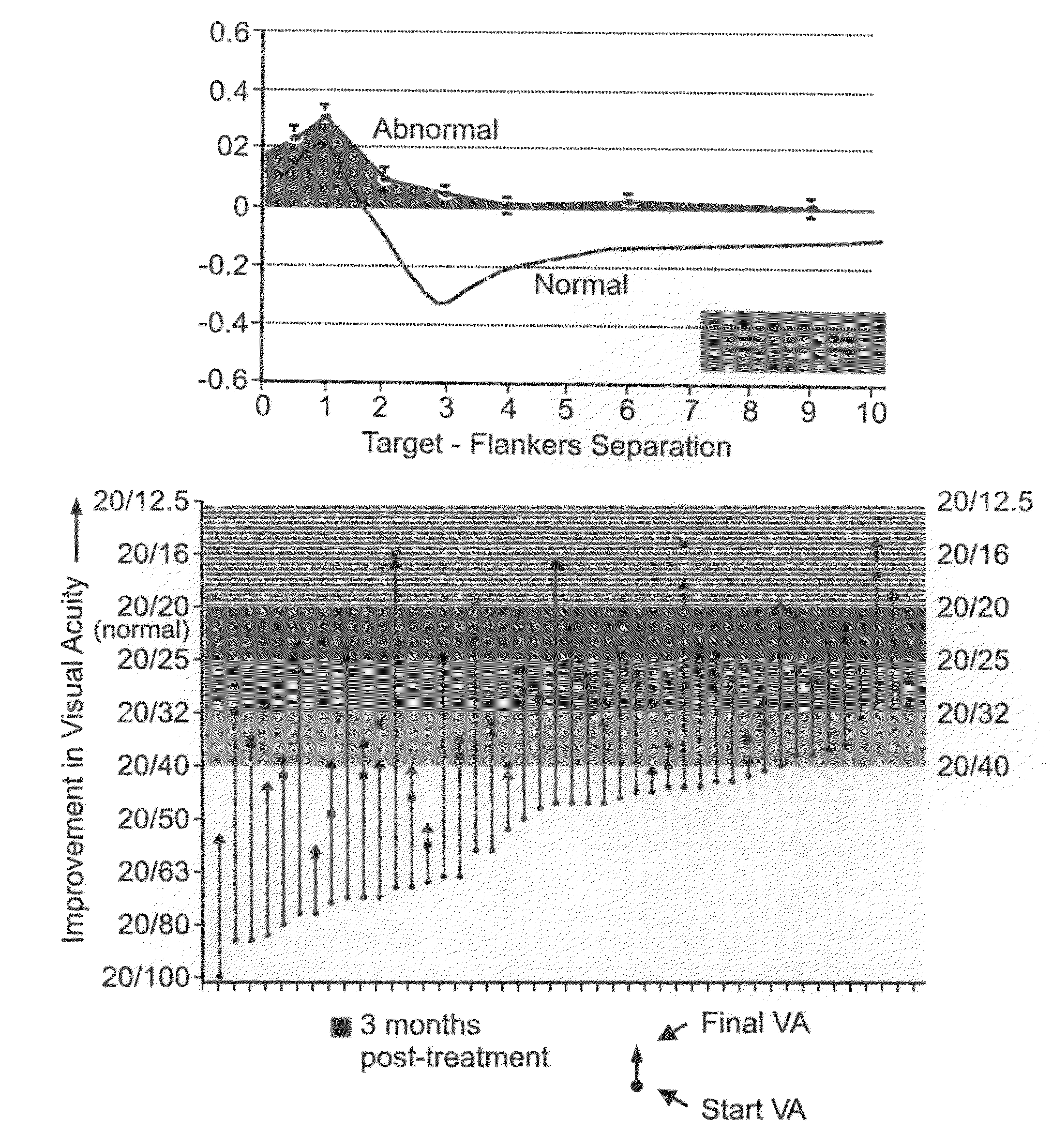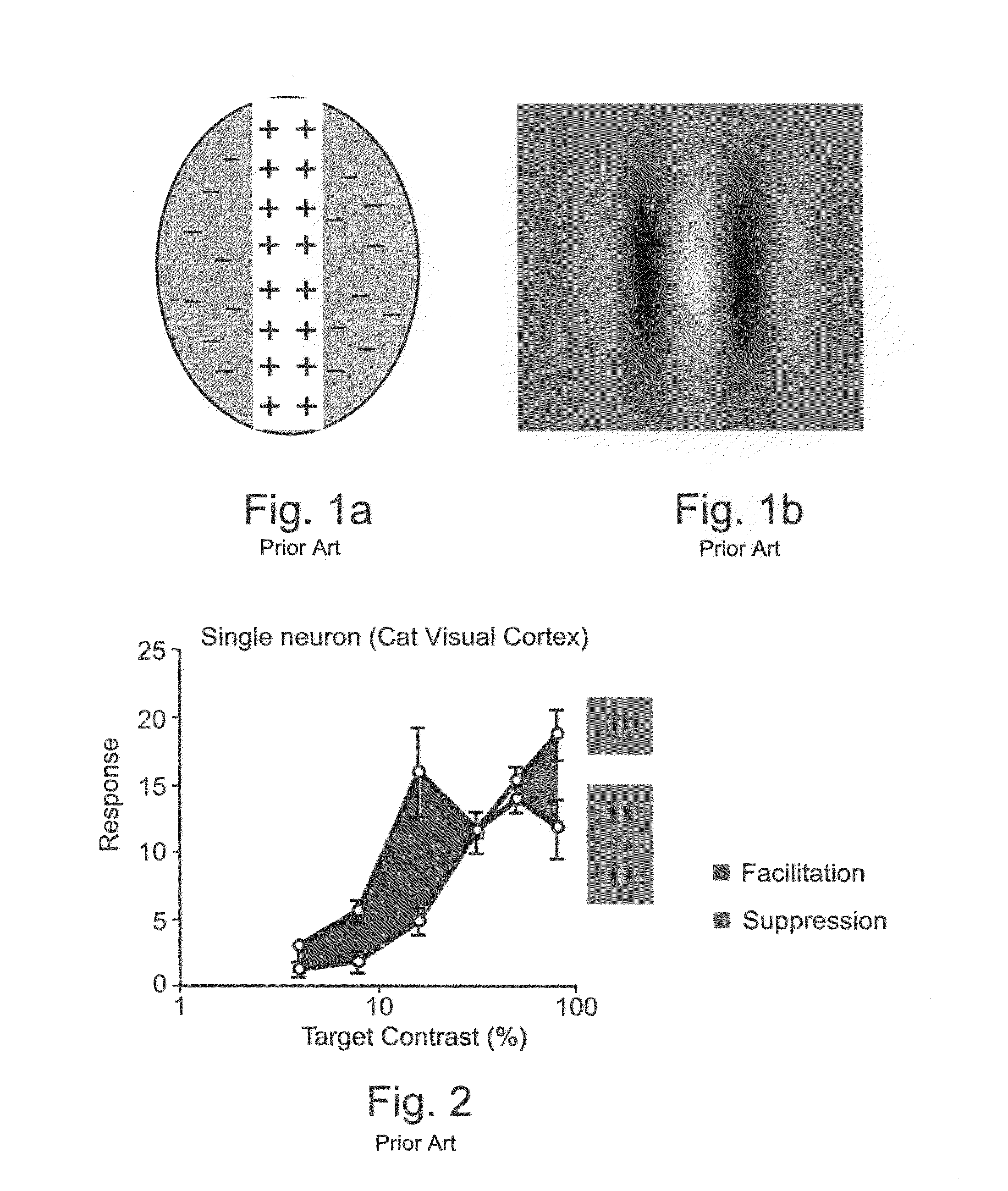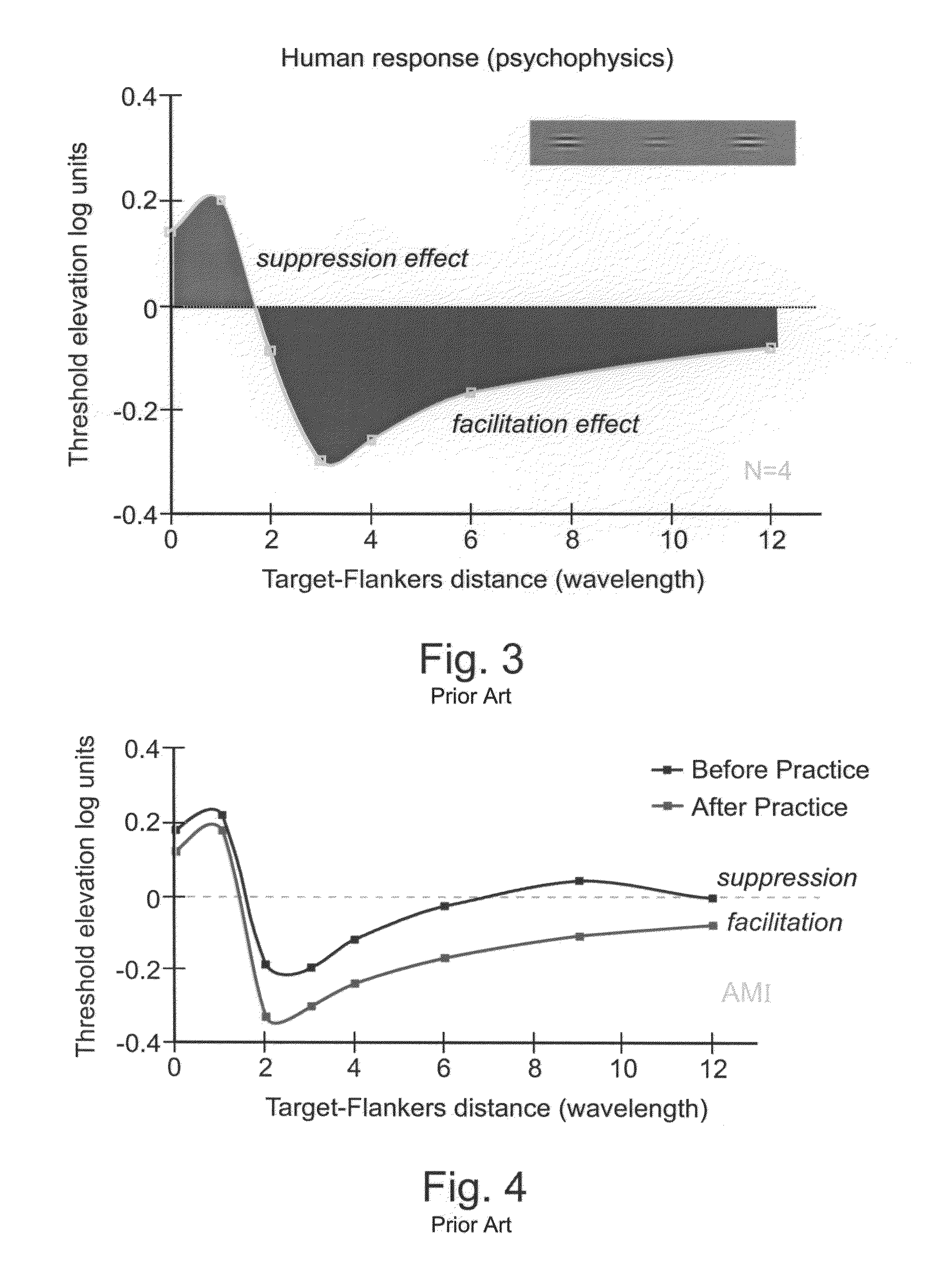Method and apparatus for improving visual perception
a visual perception and apparatus technology, applied in the field of visual perception improvement methods and apparatus, can solve the problems of impaired vision, impaired spatial orientation, and a fundamental limit of the reliable detection and discrimination of visual signals by individual cortical neurons, and achieve the effect of improving visual perception
- Summary
- Abstract
- Description
- Claims
- Application Information
AI Technical Summary
Benefits of technology
Problems solved by technology
Method used
Image
Examples
Embodiment Construction
Treatment Concept—Overview
[0054]As will be described more particularly below, the present invention involves a computerized interactive treatment in which the patient is exposed to a series of psychophysical visual tasks—“Visual Perception Tasks (VPT)”. A VPT aims to measure or improve a person's visual perception process. In fact, each VPT is generally designed to target a specific aspect of the visual perception process.
[0055]The various VPT's implemented by the system have structuring for performing all the following operations:[0056]. Providing a patient with visual stimuli designed to stimulate one or more areas of the patient's visual cortex;[0057]. Receiving responses to the visual stimuli from the patient using an input device (e.g., the computer mouse); and then[0058]. Providing more visual stimuli based on responses to the previous visual stimuli, until a threshold level is reached.
[0059]The treatment is administered in successive 30-minute sessions, each session comprised...
PUM
 Login to View More
Login to View More Abstract
Description
Claims
Application Information
 Login to View More
Login to View More - R&D
- Intellectual Property
- Life Sciences
- Materials
- Tech Scout
- Unparalleled Data Quality
- Higher Quality Content
- 60% Fewer Hallucinations
Browse by: Latest US Patents, China's latest patents, Technical Efficacy Thesaurus, Application Domain, Technology Topic, Popular Technical Reports.
© 2025 PatSnap. All rights reserved.Legal|Privacy policy|Modern Slavery Act Transparency Statement|Sitemap|About US| Contact US: help@patsnap.com



